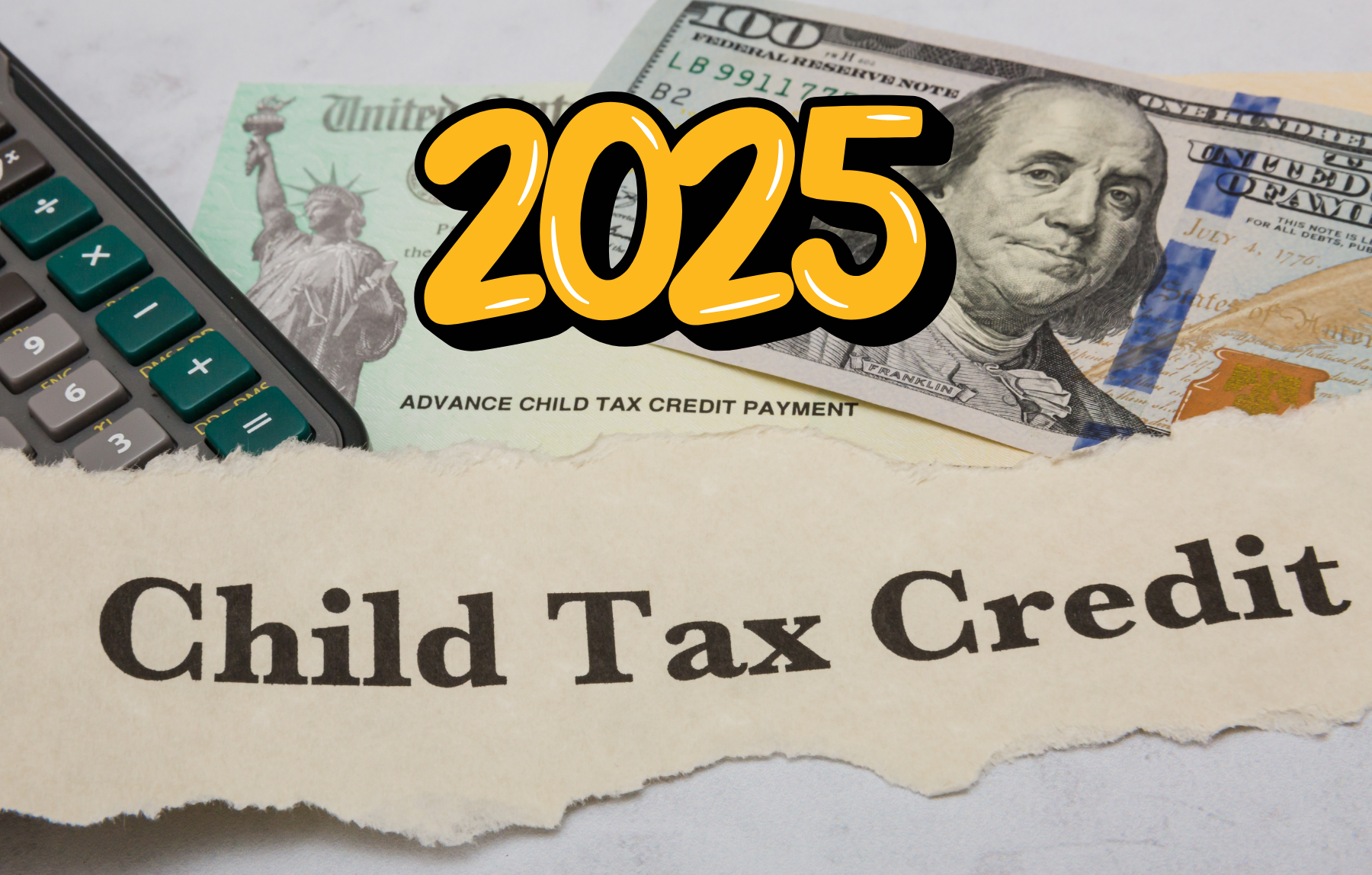IRS Child Tax Credit Refund – Check Amount, Eligibility & Payment Dates
Introduction: What Is the Child Tax Credit (CTC)?
The Child Tax Credit (CTC) is a federal tax benefit in the U.S. intended to help families reduce their tax burden and, in many cases, receive a refund. For each qualifying child under age 17, eligible taxpayers can reduce their tax liability or receive a refund even if their tax owed is zero (to the extent of the “refundable” portion).
In recent years, the structure and rules for the CTC and its refundable portion (often via the Additional Child Tax Credit, ACTC) have changed, and 2025 brings new updates. Below is a full picture of the latest status as of mid‑2025.
How Much Is the Credit in 2025?

Maximum CTC per Child
- For the 2025 tax year, the base Child Tax Credit amount is up to $2,200 per qualifying child under 17.
- However, only part of that is refundable. The refundable portion (via the ACTC) is up to $1,700 per child.
Thus, if your tax liability is large enough, the full $2,200 may reduce what you owe; if not, up to $1,700 may be refunded.
Phase-Out & Income Limits
- The credit begins to phase out for higher incomes. For single filers, the phase-out threshold is around $200,000; for married couples filing jointly, it is $400,000.
- Beyond those thresholds, the credit is reduced (typically by $50 for every $1,000 of income above the threshold).
These rules mean that many middle-income families will still be able to get the full or near-full credit, but very high earners will see it reduced or eliminated.
Eligibility Criteria: Who Qualifies?

To qualify for the Child Tax Credit (and its refundable portion), a taxpayer must satisfy several conditions:
Qualifying Child Requirements
- The child must be under age 17 at the end of the tax year.
- The child must be a dependent (you claim them on your tax return).
- They must have lived with you for more than half of the tax year (in most cases).
- They cannot have provided more than half of their own support.
- They must have a valid Social Security Number (SSN) by the due date of your return.
- They must be a U.S. citizen, U.S. national, or U.S. resident alien.
Taxpayer Requirements
- You must file a tax return (Form 1040) and attach Schedule 8812 to claim the credit.
- Your adjusted gross income (AGI) must be below the phase-out thresholds.
- Even if you don’t owe taxes, you may still receive the refundable portion (up to $1,700 per child) if you otherwise qualify.
Other Limitations & Rules
- The PATH Act imposes a timing rule: refunds that include the earned income tax credit (EITC) or Additional Child Tax Credit (ACTC) cannot be released before mid-February each year.
- If you had no income or very low income (such that you would not otherwise need to file), you may still be eligible by filing a return solely to claim these credits.
- In some cases, a Child Tax Credit Update Portal (CTCUP) or similar tool may be used to update income, dependents, or other data to adjust your credit when circumstances change.
Overall, many families with children under 17 will qualify or partially qualify, but eligibility hinges on both the child rules and the taxpayer’s income and filing status.
When Will You Get the Refund / Payment?
Annual Refund Timing (No Advance Payments)
Unlike the expanded monthly advance payments seen in 2021, as of 2025 the IRS does not currently pay the Child Tax Credit periodically during the year. Instead, the credit is claimed when you file your annual tax return, and any refund is paid out accordingly.
Therefore, your refund (if any) for the Child Tax Credit will come through the normal IRS refund processing after you file your return (along with other credits and refunds you may be due).
When Refunds Are Processed (2025 Return Season)
Here is what to expect for the 2025 filing period (for the 2024 tax year):
- The IRS typically opens the filing season in late January (e.g. January 27, 2025 for the 2025 season).
- Because of the PATH Act, if your refund includes EITC or ACTC, the IRS cannot issue refunds earlier than mid-February.
- Many refunds (for returns with no issues) will be processed within approximately 21 days of acceptance when done electronically with direct deposit.
- Paper returns or returns that require extra review can take 6 to 8 weeks or more.
- For returns filed mid‑to‑late in the season, expect refunds any time from late February through April, depending on how early or late you file and whether issues or audits arise.
Example refund estimate table:
| Filing Acceptance Date | Direct Deposit Refund Date | Paper Check Date |
|---|---|---|
| Feb 17, 2025 | ~Feb 27, 2025 | ~Mar 13, 2025 |
| Feb 24, 2025 | ~Mar 6, 2025 | ~Mar 20, 2025 |
| Mar 3, 2025 | ~Mar 13, 2025 | ~Mar 27, 2025 |
So if your return is accepted early and is clean, your refund (including CTC/ACTC) could arrive in late February or early March.
Special Note: October 2025 Payments & ACTC
Some unofficial sources suggest that ACTC payments might also be disbursed in October 2025 after processing the 2024 tax returns. These claims say that those who file their return between mid‑September and early October may receive refunds within three weeks.
However, this is not confirmed by the IRS at this time. These claims are speculative or based on interpretations rather than official policy. Always refer to IRS announcements for definitive dates.
Thus, the reliable assumption is that your refund will follow standard processing timelines after you file—rather than expecting a separate “October CTC check.”
How to Claim / File: What You Need to Do

To get the Child Tax Credit refund, you must:
- File a federal income tax return (Form 1040) for the relevant tax year (e.g. 2024).
- Include Schedule 8812 to compute the credit and the refundable portion (ACTC).
- List your qualifying children and ensure all required information (SSN, dates, relationships) is correctly entered.
- Choose direct deposit (if possible) to receive refunds more quickly.
- If you had changes in income, filing status, or dependent counts after your last tax return, stay alert for IRS tools to update information mid‑year.
- File as early as possible (once IRS opens the season) to speed up processing.
Even if you normally wouldn’t file (because your income is too low), you may still benefit from filing a return just to claim the refundable portion of CTC/ACTC, if eligible.
Delays, Common Issues & What to Watch Out For
PATH Act Delay
Because of the PATH Act, refunds that include EITC or ACTC cannot be disbursed before mid-February. So even if you file in January, the IRS must hold the refund until that date.
Audit or Review Holds
If your return has inconsistencies, missing info, mismatched Social Security numbers, or other red flags, the IRS may review or audit your return. That can delay your refund. Always double-check your entries.
Missing or Incorrect SSNs / Dependent Info
If a child or parent has incorrect or missing Social Security information, the IRS may disallow or delay the credit until corrections are made.
Not Using Direct Deposit
If you opt for a paper check instead of direct deposit, expect a slower delivery (postal delays, processing lags) relative to electronic deposit.
Income Changes After Return
If your income or family situation changes mid-year (e.g. marriage, new child, job change), the credit amount based on your last return might no longer match reality. Watch for updates or IRS tools to adjust.
Example Scenario
To illustrate:
- Suppose Jane, a single filer, has two qualifying children under 17.
- Her AGI is $60,000 (well under the $200,000 threshold), so she qualifies for the full credit.
- She claims the $2,200 per child, totaling $4,400 credit.
- If her tax liability is $3,000, then $3,000 of the credit offsets that.
- She then qualifies for the refundable portion (ACTC) up to $1,700 per child = $3,400. Since she still hasn’t used the full credit, she may receive a refund of $1,400 (i.e. $4,400 credit minus the $3,000 tax liability).
- She files early (electronically, with direct deposit). Because EITC or ACTC applies, the IRS must wait until mid-February before issuing refunds.
- She might receive her refund (including the CTC portion) in late February or early March, depending on IRS processing.
This example shows how the mix of nonrefundable and refundable portions works in practice.
Summary & Key Takeaways
- For 2025, the Child Tax Credit is up to $2,200 per child under age 17, with up to $1,700 refundable via the Additional Child Tax Credit (ACTC).
- Eligibility depends on child-related tests (age, SSN, relationship, residency) and your income (phase-out thresholds).
- The credit is not paid monthly; you claim it on your annual tax return (Form 1040 + Schedule 8812).
- Because of the PATH Act, refunds involving EITC or ACTC cannot be issued before mid-February.
- If you file early and all is correct, your refund may arrive about 21 days later (for direct deposit) or longer. Paper returns or reviews will delay things further.
- Watch for IRS tools or portals to correct or update information if your circumstances change.
- Always double-check your SSNs, dependent info, and income entries to avoid delays or disallowed credits.
FAQs
1. What is the Child Tax Credit (CTC)?
The Child Tax Credit is a federal benefit offering up to $2,200 per qualifying child under 17, reducing tax or providing a refund, depending on income and eligibility.
2. How much is the CTC in 2025?
For 2025, it’s up to $2,200 per child, with $1,700 potentially refundable via the Additional Child Tax Credit (ACTC) if your tax owed is less than the credit.
3. Who qualifies for the CTC in 2025?
You must have a qualifying child under 17, valid SSN, meet income limits, file a return with Schedule 8812, and satisfy IRS residency and support criteria.
